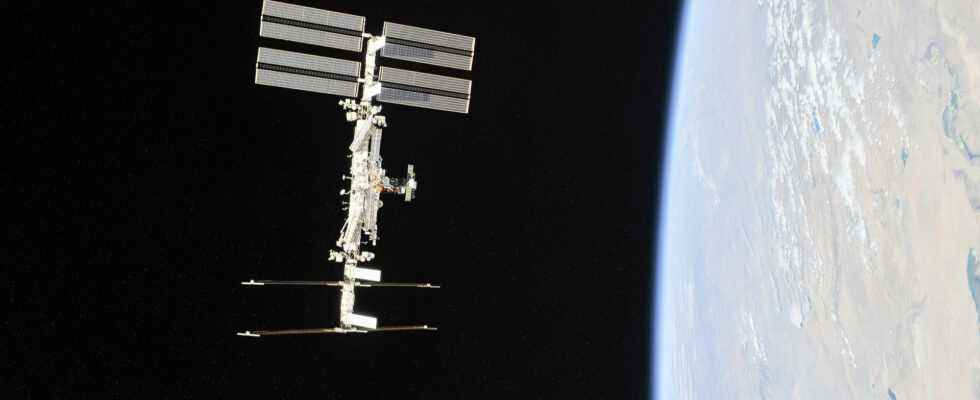It was still necessary to carry out a maneuver for the International Space Station to avoid space debris. Months after a Russian anti-satellite missile test, these fragments still pose a danger to the ISS.
The International Space Station had to change its trajectory again to avoid space debris. The evasive maneuver took place on June 16, 2022, spotted Space June 19. The debris that posed a risk came from a Russian anti-satellite missile test, which had previously raised concerns.
This Russian anti-satellite missile test took place on November 15, 2021. It targeted a former Soviet Cosmos 1408 satellite, launched in 1982, which was no longer operational. The launch in November destroyed this satellite, creating a gigantic cloud of debris, including 1,500 fragments large enough to be traced. In addition to causing, already at the time, an avoidance maneuver, the incident had forced the astronauts present in the ISS to take refuge because of the space debris.
Russia acknowledges that the debris is its own
It was using Progress 81, a Russian resupply spacecraft docked to the ISS, that the new evasive maneuver was carried out on June 16. A video showing how the craft was used, filmed by cosmonaut Sergei Korsakov (who has been on the station since March), was shared on Telegram by Dmitry Rogozin, the director general of Roscosmos. The Russian space agency also confirms that the hazardous space junk is indeed its own, which is rather unusual. In November 2021, the Russian army had been silent for a day, before admitting having carried out the anti-satellite missile test.
” The thrusters of the International Space Station’s Progress 81 spacecraft were fired for 4 minutes and 34 seconds as part of a predetermined debris avoidance maneuver “says NASA in a blog post. The station gained a little more altitude during the maneuver. The space agency adds that ” the crew was never in danger and the maneuver had no impact on station operations “. If this avoidance maneuver had not been carried out, NASA estimates that the space debris would have passed at a distance of about 800 meters from the ISS.
A few months after the November 15 launch, this new avoidance maneuver carried out by the ISS underlines that the debris created by the Russian missile is a long-term threat. Overall, the space debris littering Earth’s orbit is a danger to the ISS. They risk injuring a member of the crew during a spacewalk, or damaging the station’s modules.
